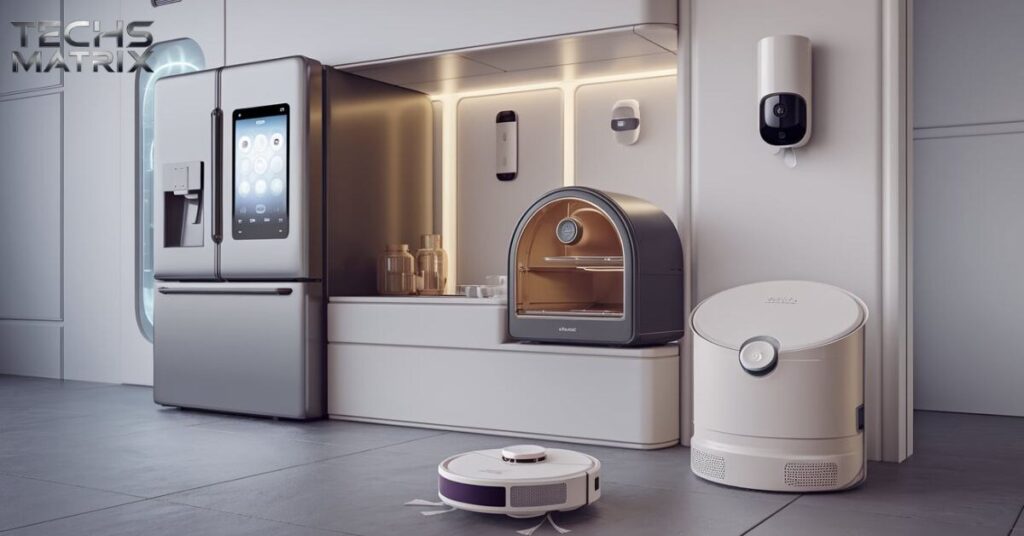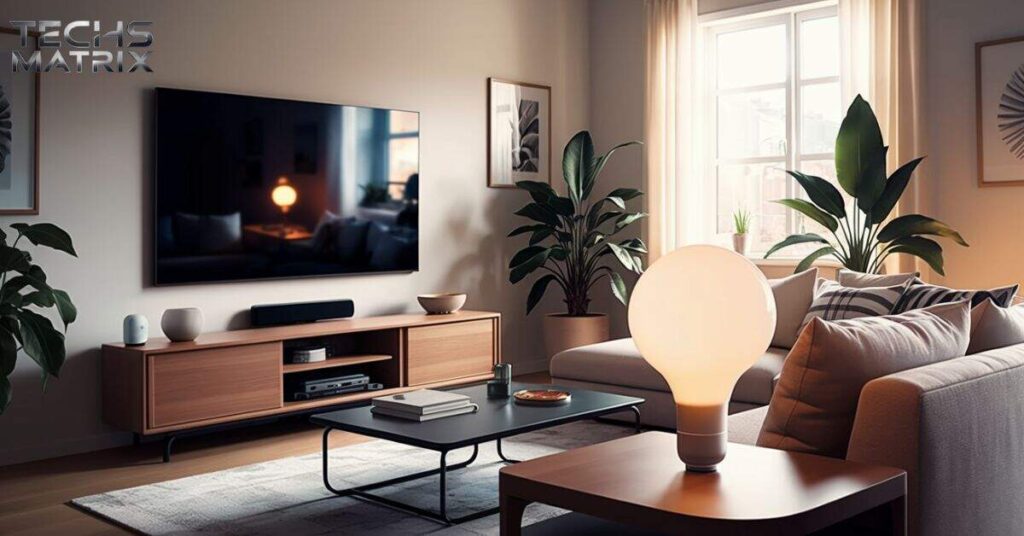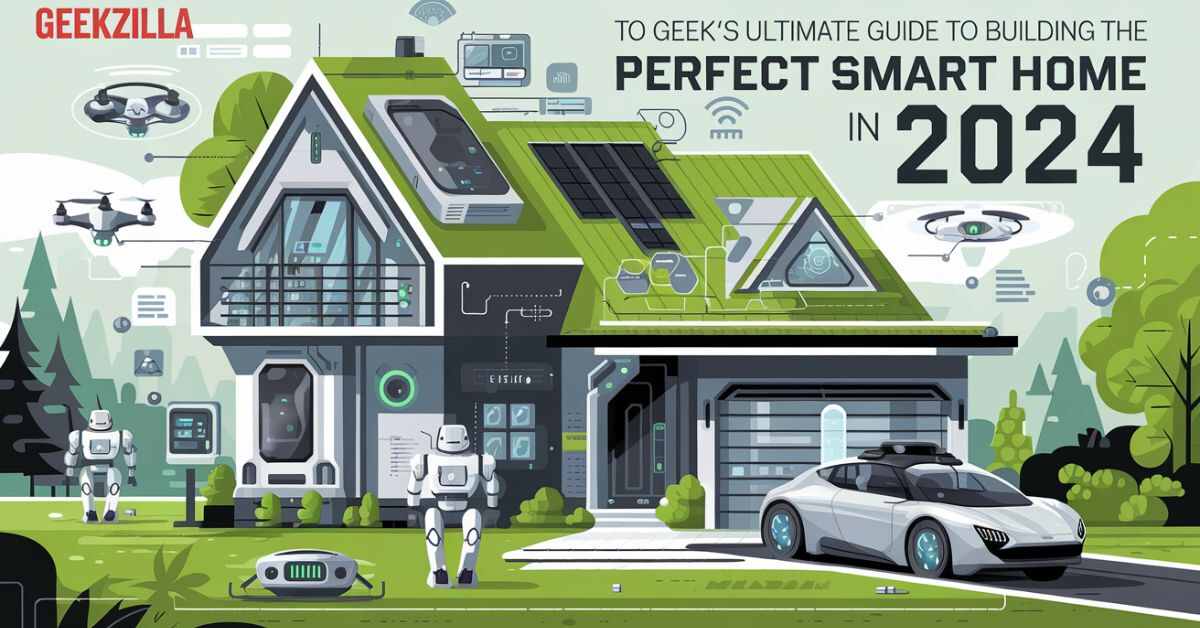Smart homes are revolutionizing our living spaces. They offer convenience, efficiency, and futuristic technology. In 2024, creating the ideal smart home is both exciting and complex.
This guide will help you navigate the process. We’ll explore essential components and best practices. Let’s dive into the world of smart home technology.
What Is a Smart Home?
A smart home integrates various devices and systems. These work together to enhance daily living. Smart homes use interconnected devices.
These are managed through a central hub. You can control them with smartphones, tablets, or voice commands. The goal is to make life easier and more efficient.
Core Elements of a Smart Home
Smart homes have several key components. The smart hub is the brain of the system. It connects and controls all devices. Popular options include Amazon Echo and Google Nest Hub. Smart lighting allows remote control and scheduling.
Smart thermostats adjust temperature based on preferences and habits. They help save energy and reduce costs.Security is a crucial aspect of smart homes. Smart locks, cameras, and doorbells enhance safety.
They enable remote monitoring of your property. Smart appliances offer advanced features and remote controls. These include refrigerators and washing machines. Entertainment systems are also part of smart homes. Smart TVs and speakers integrate into your home network.
Planning Your Smart Home
Creating a home automation requires careful planning. You need to consider your needs and budget. Research is crucial for choosing the right devices. A well-thought-out layout ensures optimal functionality. Let’s look at the planning process in detail.
Assessing Your Needs and Budget
Start by evaluating your current living situation. Identify areas where smart technology can add value. Think about your lifestyle and daily routines.
Consider which features are most important to you. Set a realistic budget that reflects your goals. Remember to account for future upgrades and expansions.
Researching and Choosing Devices
The market offers many smart devices. It’s essential to choose ones that are compatible with each other. Check compatibility specifications carefully.
Read user reviews to ensure devices work well together. Consider factors like ease of use and reliability. Look for devices that offer regular software updates.
Designing Your Smart Home Layout
Create a floor plan of your home. Decide where each smart device will go. Consider the placement of smart lighting and security cameras. Ensure they provide optimal coverage.
Think about the location of smart speakers for voice control. Plan the placement of smart appliances in the kitchen and laundry room.
Essential Smart Home Devices for 2024
Smart home technology is constantly evolving. New devices emerge each year. Here are some top picks for 2024. These devices offer advanced features and improved functionality.

Smart Thermostats
Smart thermostats have come a long way. The Nest Learning Thermostat is a popular choice. It offers adaptive learning and geofencing. The Ecobee SmartThermostat provides similar features.
These devices help save energy and customize temperature settings. They learn your preferences over time.
Smart Lighting Solutions
Smart lighting offers versatility and ambiance. Philips Hue is a leading brand in this category. They offer color-changing bulbs and programmable schedules.
LIFX is another popular option. Smart lighting can enhance the mood of any room. It also contributes to energy savings.
Smart Security Systems
Home security is a top priority for many homeowners. Ring offers comprehensive smart security solutions. Their products include video doorbells and cameras.
Arlo is known for high-quality wireless security cameras. August specializes in smart locks for enhanced door security. These systems provide peace of mind and remote monitoring.
Smart Speakers and Voice Assistants
Voice assistants play a central role in smart homes. Amazon Echo devices are widely used. They offer Alexa voice control and home automation integration. Google Nest Audio provides similar functionality with Google Assistant.
Apple HomePod caters to those in the Apple ecosystem. These devices allow hands-free control of various smart home functions.
Smart Appliances
Smart appliances bring technology to everyday tasks. Samsung and LG are leading brands in this space. They offer smart refrigerators with touchscreens and cameras.
Smart washing machines can be controlled remotely. These appliances often include energy monitoring features. They aim to make household chores more efficient.
Integrating Your Smart Home Devices
Integration is key to a functional smart home. Proper setup ensures all devices work together seamlessly. Automation enhances the home automation experience. Let’s explore how to integrate your devices effectively.
Setting Up Your Smart Hub
Follow the manufacturer’s instructions carefully. Connect your smart hub to your Wi-Fi network. Use the hub’s app to add and configure smart devices. Ensure your Wi-Fi signal is strong throughout your home. Consider using a mesh network for better coverage.
Configuring Device Automation
Automation makes your smart home truly intelligent. Create routines and schedules for your devices. Program lights to turn on at sunset.
Set the thermostat to adjust based on your schedule. Use motion sensors to trigger actions. Experiment with different automation scenarios.
Ensuring Compatibility and Connectivity
Check that all devices are compatible with your hub. Verify compatibility between different devices. Regularly check for firmware updates. Address connectivity issues promptly.
Use troubleshooting guides provided by manufacturers. Seek help from online forums or customer support when needed.
Enhancing Your Smart Home Experience
Maximize the potential of your smart home setup. Embrace new features and technologies. Monitor and optimize energy usage. Stay informed about the latest developments. Here are some ways to enhance your home automation experience.

Embracing Voice Control
Voice control adds convenience to your smart home. Practice using voice commands for various tasks. Set up voice-activated routines. Use voice control for hands-free operation. Explore advanced voice features offered by your devices.
Monitoring Energy Usage
Many smart devices offer energy monitoring. Track your energy consumption regularly. Identify ways to reduce energy usage. Use smart plugs to monitor individual devices. Set goals for energy reduction and track your progress.
Staying Updated with New Technology
The smart home industry evolves rapidly. Stay informed about new product releases. Follow technology news and reviews.
Consider upgrading devices when significant improvements are available. Attend home automation expos or virtual events.
Troubleshooting Common Issues
Even well-planned smart homes can encounter issues. Knowing how to troubleshoot common problems is essential. Here are some typical issues and how to address them.
Connectivity Problems
Check if devices are within range of your Wi-Fi. Restart your router and smart hub. Look for sources of interference. Consider using Wi-Fi extenders or a mesh network. Update device firmware regularly.
Must Read This Article:Money 6x REIT Holdings: Your Path to Passive Income Through Real Estate
Device Compatibility
Verify compatibility before purchasing new devices. Check for software updates that may resolve compatibility issues. Consult user manuals and support forums.
Consider using a universal home automation platform. Replace incompatible devices if necessary.
Automation Failures
Review your automation settings and schedules. Check for conflicts between different routines. Ensure all devices involved in automation are online.
Test automations individually to identify issues. Recreate problematic automations from scratch if needed.
FAQ’s
What is the best smart home hub for beginners?
Amazon Echo devices with Alexa are user-friendly for beginners. They offer wide compatibility and easy setup.
How much does it cost to set up a basic smart home?
A basic smart home setup can cost between $500 to $1500. This includes a hub, some smart bulbs, a thermostat, and a few smart plugs.
Are smart homes secure from hacking?
Smart homes can be secure if proper precautions are taken. Use strong passwords, enable two-factor authentication, and keep devices updated.
Can I install smart home devices myself?
Many home automation devices are designed for DIY installation. However, some may require professional help, especially for electrical work.
Will a smart home save me money on energy bills?
home automation can lead to energy savings through efficient thermostats and lighting control. The amount saved varies based on usage and devices.
Conclusion
Building the perfect smart home in 2024 is an exciting journey. It requires careful planning, research, and integration. By following this guide, you can create a home that’s efficient, convenient, and technologically advanced.
Smart homes continue to evolve, offering new possibilities for modern living. Embrace the future of home automation and enjoy the benefits of a connected, intelligent living space.

Sallas: Tech-savvy professional with 5 years in the industry. Skilled in software development, cloud computing, and AI. Known for innovative solutions and teamwork.








